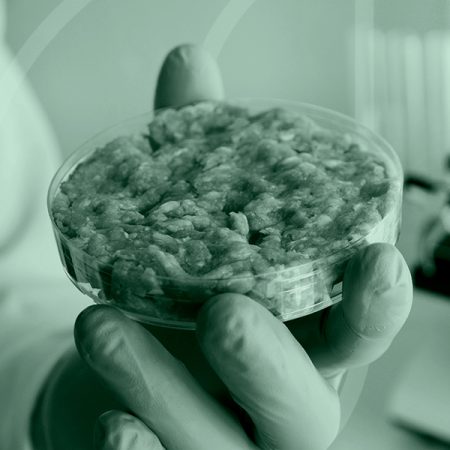
By Cocoon Bioscience
We make sure that sustainability starts at the very beginning of the process when it comes to cultivated meat.
In recent years, there has been some contention over how sustainable cultivated meat really is. Some think the claims that it reduces carbon emissions are not just false, but actually that it produces more. Nevertheless, others point out that although it is not inherently more environmentally friendly than cattle, it has the potential to significantly reduce carbon emissions if green energies and sustainable production processes are used.
Therefore, to realise the potential carbon benefits, every element of the supply chain must be accountable for its emissions – including the development of growth factors. In this blog, we’re looking at the potential positive impacts of sustainable cultivated meat production, and what we’re doing at Cocoon to support this vision.
The potential for sustainable impact in cultivated meat
The potential benefits of cultivated meat are undeniable. Compared to rearing traditional meat, lab-grown meat at scale “could lower climate emissions by 92 per cent and use 90 per cent less land than conventional beef”, as well as using less water and producing less waste.
However, the industry is still developing. While some sources state that “the GHG emissions per unit of cultured meat are uniformly shown as superior to that of beef where this comparison is made (trends are less clear for other animal products)”, it’s difficult to confirm these claims at this stage.
What is certain is that there are many opportunities to make cultivated meat sustainable. For example, by using renewable and green energies to power bioreactors and other industrial machinery.
This approach requires the entire supply chain, not just the cultivated meat producers, to take action. As producers of growth factors in this supply chain, we recognise our responsibility in fulfilling the promise of a more sustainable food supply and helping mitigate the climate impact of meat.
Sustainable processes, starting with growth factors
“Our findings suggest that cultured meat is not inherently better for the environment than conventional beef. It’s not a panacea,” said Edward Spang, an associate professor in the Department of Food Science and Technology at UC Davis and one of the study’s authors. “It’s possible we could reduce its environmental impact in the future, but it will require significant technical advancement to simultaneously increase the performance and decrease the cost of the cell culture media.” – American Society of Animal Science
We believe in the positive impact cultivated meat could have for our planet and for protecting resources for future generations. By producing growth factors, we are firmly embedded in the value chain as a provider and enabler of one of the most important ingredients in the process. This means we are determined to take accountability for helping realise these impacts.
That’s why we work consciously to align with several ESG and SDG goals throughout our work, including:
- World hunger
- Responsible production and consumption
- Wellbeing of consumers
- Life on land
- Life in water
- Climate action
Here’s how we ensure our processes are shaped to reflect these goals and to contribute to the overall sustainability of the cultivated meat industry.
1. Technology
We do not use capex- and resource-intensive bioreactors. This translates to a more energy- and water-efficient production process than some other approaches to growth factor development: a benefit which will only improve as we scale up.
2. Process
By using cocoons as bioreactors, our processes are inherently nature-based and can scale linearly. By not using open field planting we are reducing land use and ensuring our production is more reliable (because it’s not dependent on weather conditions).
3. Cost
We have significantly reduced the cost of growth factors, so they now represent a much lower percentage of the total production cost.
By making growth factors more accessible (both in cost and in scale), we are contributing to a more sustainable food supply chain and tackling global hunger.
4. Waste
We are working hard to lower the volume of waste. A portion of the pupae we rear for the purpose of maintaining the population, not for production, unfortunately die during the process. We are collaborating with different partners to introduce a second use for these pupae, such as being used as animal feed.
Others destined for production end up being unsuitable due to their size or weight.
As we start scaling up and improving the efficiency of our processes, we expect the total amount of waste to reduce.
Our sustainability roadmap
Sustainability plays a big role in our long-term roadmap. We plan to introduce more sustainable practices throughout our operations as we grow. Currently, we are in the pilot phase of our growth but as our resources scale into our industrial phase, we will dedicate more to sustainable initiatives.
Get in touch with us to talk about our process and how we support cultivated meat organisations in more detail.
